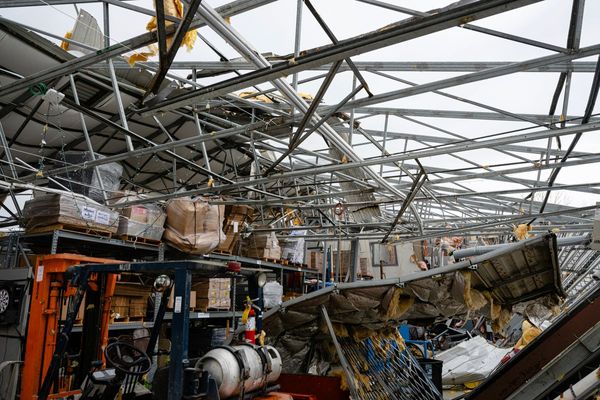
Fans and journalists love to assess drivers, discover who is starring, who is underperforming and how team-mates with the same machinery compare. With Formula 1 in its summer break, now seems like a good time to look at the crop of 2024.
There are, of course, plenty of ways to compare drivers, but one of the key ones is raw speed. Without it, no driver will be successful, and qualifying is, in theory, the least complicated indicator of pace.
Below you can see how the 2024 F1 team-mates stack up after 14 rounds, based on their qualifying performances for grands prix (not sprints). We’ve excluded sessions in which one driver in a team could not record a representative time for reasons outside their control, explaining why not all add up to 14.
Qualifying head-to-head
1. Leclerc 8-5 Sainz
2. Ocon 8-4 Gasly
3. Alonso 9-5 Stroll
4. Tsunoda 9-4 Ricciardo
5. Russell 10-4 Hamilton
6. Hulkenberg 10-2 Magnussen
7. Norris 11-3 Piastri
8. Bottas 13-1 Zhou
9. Albon 13-0 Sargeant
10. Verstappen 14-0 Perez
Although a fine gauge of assessing who is getting the upper hand in the intra-team fights, this metric is rather crude. Clearly, if a driver is consistently just a few thousandths of a second away from their team-mate, they are still doing a good job and are very close to maximising their car, while another could regularly be half a second off but on a similar head-to-head score.
To get a clearer view of the drivers’ actual speed, we’ve looked at supertimes. Supertimes are based on the fastest single lap by each driver at each race weekend, expressed as a percentage of the fastest single lap overall (100.000%) and averaged over the season.

This normally means qualifying and also has the benefit of largely (though not entirely) eradicating a driver struck with a problem or misfortune in a given session because it takes into account the whole weekend. It’s not perfect – it gives us no steer on how consistent a driver is over a race stint, for example – but for raw speed, it can be enlightening.
Supertimes gaps for the 10 team-mate pairings so far in 2024
1. Gasly-Ocon 0.015%
2. Russell-Hamilton 0.101%
3. Leclerc-Sainz 0.134%
4. Norris-Piastri 0.185%
5. Tsunoda-Ricciardo 0.196%
6. Alonso-Stroll 0.211%
7. Hulkenberg-Magnussen 0.426%
8. Bottas-Zhou 0.643%
9. Albon-Sargeant 0.675%
10. Verstappen-Perez 0.953%
The first thing to note is how remarkably close Alpine drivers Pierre Gasly and Esteban Ocon are. It’s the equivalent of a 0.015-second gap around a 1m40s lap. It’s a similar gap to that between Lewis Hamilton and Fernando Alonso at McLaren in 2007 (0.019s in Hamilton’s favour) and between 2015 Toro Rosso rookies Max Verstappen and Carlos Sainz (0.067s).
Oscar Piastri has slightly narrowed his 2023 gap of 0.227% to 0.185% against Lando Norris, but there’s a feeling that both can perform even better if they can cut out small errors
The Frenchmen are close on just about every metric you can look at: Gasly has six points to Ocon’s five, Gasly has averaged 6.2 to Ocon’s 6.1 on our Driver Ratings, and both have scored an average of 5.7 in our reader scoring. The partnership has hardly been harmonious but it underlines the fact that driver performance is not Alpine’s key problem in 2024…
PLUS: The 2024 F1 half-term driver grades
The gap between George Russell and Hamilton at Mercedes is also small. Hamilton is 10-4 behind, which has led to some suggesting the seven-time champion has lost interest ahead of his move to Ferrari. But being 0.101% behind a hungry driver 13 years his junior hardly suggests he’s fallen off a cliff.
Hamilton’s race pace has also remained strong, particularly in the most recent races, and he currently leads Russell in the championship – and would narrowly be ahead even if the younger Briton was handed back his Belgian GP victory.

The Ferrari pairing can be viewed in one of two ways. Either it’s a fine effort by Sainz to be so close to established one-lap star Charles Leclerc, or it’s impressive Leclerc is still ahead given he has arguably had a more tumultuous season so far!
As one might expect, Oscar Piastri has slightly narrowed his 2023 gap of 0.227% to 0.185% against Lando Norris, but there’s a feeling that both can perform even better if they can cut out small errors as they get used to competing right at the very front of F1. How that gap changes over the rest of the campaign – and seasons to come – will be a fascinating subplot.
Yuki Tsunoda’s gap over Daniel Ricciardo backs up the Japanese’s claim that he should have been in the (ultimately futile) discussions about replacing Sergio Perez, though it should be noted that the gap has been closing in recent GPs.
Alonso’s recent slump is also revealed by a modest 0.211% advantage over Lance Stroll. The gap between the Aston Martin pair across 2023 was 0.753%, one of the biggest in the field, so we would expect the margin to increase again over the final 10 races.
The bottom four pairings show significant gaps and it’s surely no coincidence that all four contain a driver who will either be out of F1 at the end of 2024 or whose position is under threat.
Nico Hulkenberg has been a star of 2024 and has a Sauber/Audi contract in his pocket. His 0.426% gap over Kevin Magnussen is even bigger than his 0.330% advantage in 2023 and he has 22 points on the board compared to the Dane’s five.
Zhou Guanyu’s deficit to Valtteri Bottas at Sauber is more than double what it was last year, 0.643% to 0.299%. Bottas has a good history on one-lap pace – he was only 0.116% behind Hamilton across their five seasons together at Mercedes – but the magnitude of the 2024 gap so far puts China’s first F1 driver in a weak position.

Logan Sargeant has chipped away at the gap to Alex Albon at Williams, but it is still a sizeable 0.675% behind in what seems set to be his final season in F1. Which brings us to the biggest deficit…
Much has been said and written about Perez’s struggles at Red Bull alongside Verstappen, but it’s worth putting the current 0.953% gap into context.
PLUS: How Spa showed exactly why Red Bull must ditch Perez
Firstly, it’s the biggest gap between the two we’ve seen since they became team-mates for 2021, the closest being 0.545% in 2022. That suggests that whatever the root of Perez’s problems are, they are not improving.
Supertimes aren’t everything, as Button scored more points than Hamilton across 2010-12, but that is not a consideration when it comes to Verstappen-Perez. Perez is currently seventh in the championship, 146 points behind his team-mate
The closest a Red Bull team-mate has got to Verstappen across a full season is 0.138% and 0.186%, which Ricciardo managed in 2018 and 2017 respectively. Perez is currently even further behind than Albon was in 2020 (0.784%).
During his tricky second stint at Ferrari, Kimi Raikkonen was on average 0.284% behind Sebastian Vettel across their four seasons together, while the gap between Hamilton and Jenson Button at McLaren was 0.306% in 2010-12. That serves to remind us that supertimes aren’t everything, as Button scored more points than Hamilton across those seasons, but that is not a consideration when it comes to Verstappen-Perez. Perez is currently seventh in the championship, 146 points behind his team-mate.
If we look at more obvious number one/number two line-ups in recent history, we see a 0.390% gap between Michael Schumacher and Rubens Barrichello at Ferrari across 2000-05, and a 0.277% margin separating Vettel and Mark Webber at 2009-13 Red Bull.
It should be noted that the various qualifying format changes of 2003-09, including cars running on the fuel load they had to start the race with, skews the data. Interestingly, Barrichello tended to be closer to Schumacher when the Ferrari was dominant.

To find a gap between two frontrunners that is similar to that between Verstappen and Perez, you have to look at Schumacher-Eddie Irvine at Ferrari. Across their three full seasons together, the average was 0.908%, though it should be noted that Irvine got closer each year after starting a whopping 1.286% behind in the difficult F310 of 1996.
Riccardo Patrese was 0.999% behind Nigel Mansell in 1992 but, such was Williams’s advantage with the FW14B, the Italian still finished second in the drivers’ championship. That gap can also be largely attributed to one driver gelling with the gizmo-laden, active suspension car and the other not, given the margin was a mere 0.111% with the more conventional FW14 of 1991.
The Verstappen-Perez disparity is genuinely unusual in the modern era, which helps to explain the surprise of Autosport – and others – that the Mexican has so far held on to his drive.
In summary, Gasly-Ocon are the most evenly matched, the gaps at Mercedes, Ferrari, McLaren and RB are all sensibly close, Alonso is probably underperforming given his previous gap to Stroll but is still ahead, and the remaining four teams all have serious deficits that put constructors’ points at risk and F1 careers in the danger zone.








